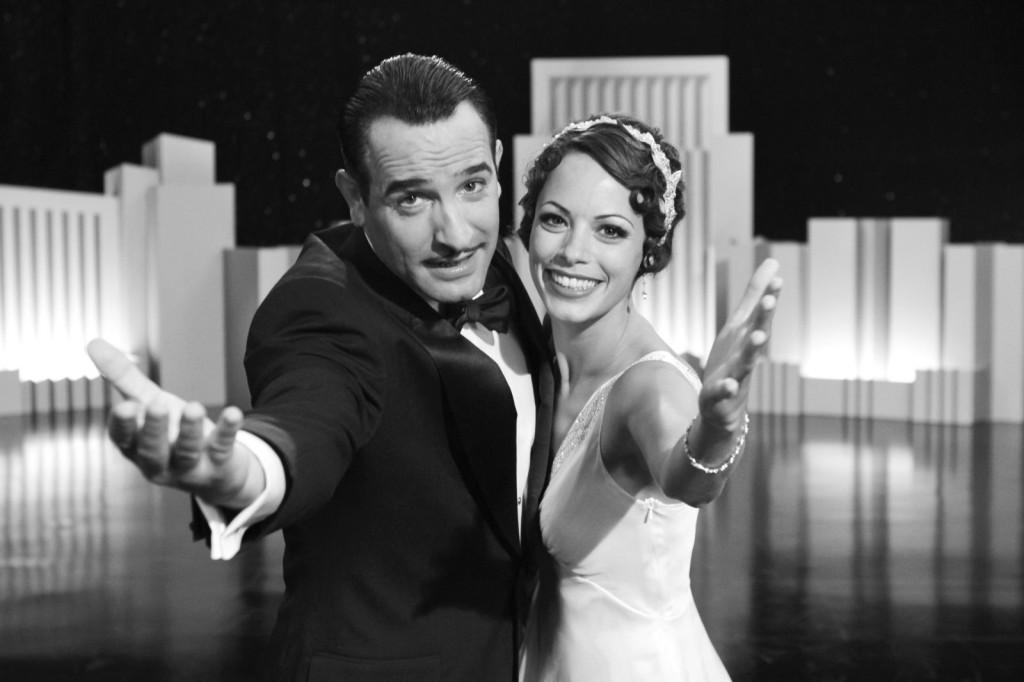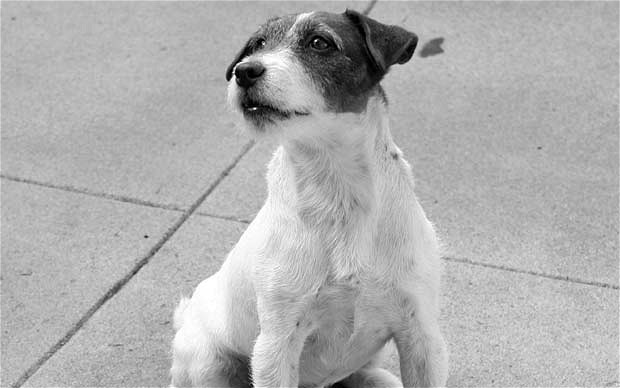
Expectations are a funny thing. Had I simply walked into Michel Hazanavicius’ fun but gimmicky throwback The Artist with no foreknowledge of the production, I probably would’ve left the theater thinking it was a frothy and mostly delightful homage to the silent films of yesteryear. But burdened as it now is with a bevy of Oscar expectations, I left thinking: “Well, that was fun and light…but Best Picture? Really?“
Don’t get me wrong — The Artist is a very enjoyable evening at the movies, and it’s an airier, sweeter, and less didactic love letter to an earlier era of cinema than was Scorsese’s occasionally-ponderous Hugo. But there’s not much there there. Aside from the occasional po-mo in-joke, this is a 1920’s film through and through, one that borrows the storytelling conventions and acting styles of the silent film era (and much of its story from a later production, Singing in the Rain.) In other words, it’s pretty much just a gimmick. An entertaining one, sure, but a gimmick nonetheless.
As far as the story goes, the year is 1927, and silent film actor George Valentin (an appealing, Gable-esque Jean Dujardin) is king of the hill, top of the heap. His Tintin-like adventure serials — Tintin-like in that his sidekick is a scene-stealing pup (Uggie) — are the draw in Tinseltown. And he is always surrounded by young admirers, including Peppy Miller (Berenice Bejo, also appealing), a leggy ingenue with a lopsided grin who’s got the moves like Rogers (the moves like Rogers, the moooooooooves like Rogers) and who is struggling to break into the picture business. From their very first meet-cute, George takes to Peppy like Fatty Arbuckle to gin — much to the consternation of his wife (Penelope Ann Miller) — but unfortunately their stars are moving in different directions.
Y’see, through the miracle of modern technology, films are now becoming “talkies” — an innovation that creates an opportunity for America’s New Sweetheart, Peppy, but leaves George just a dimming artifact of the past: His broad facial tics and gesticulations begin to look utterly ridiculous in an era of sound, and even the remarkable shenanigans of his faithful Jack Russell companion can’t put his movies over the top. In short, the country’s tastes are changing, there’s not much room for silent film waggery any longer, and hastening George’s descent is the small matter of the Great Depression. What’s a broken down old film star to do?
Well, he could handle the situation with grace and let Peppy have her turn in the spotlight — but I suppose that’s a contemporary way of thinking. Here, George — shown to be an egotistical sort from the start — becomes an increasingly self-destructive drunk who heedlessly shuns the friendship and charity of those around him. (I didn’t get his behavior in the last act at all, to be honest.) But, really, this isn’t a modern character study — It’s a 1920’s lark, and taken as such, it’s a simple, fun night at the movies. Go in with suitably low expectations and you should have a grand ole time.
In the end, I’m not quite sure where all the Best Picture talk is coming from — Is it the annual Weinstein steamroller at work? is it critics falling for a movie that rewards their knowledge of film lore? Hollywood types relishing a tale of, well, Hollywood types? Or is it just a function of the relatively weak year at the cinema? Whatever the case, I wouldn’t put it nearly that high on my own 2011 list. Nonetheless, The Artist does signify the emergence of a major talent who should become a star in this business. I refer, of course, to far away the best thing in the film — Uggie. Best Picture? Perhaps not. But, c’mon y’all, Consider Uggie. We all know he made this movie work.

